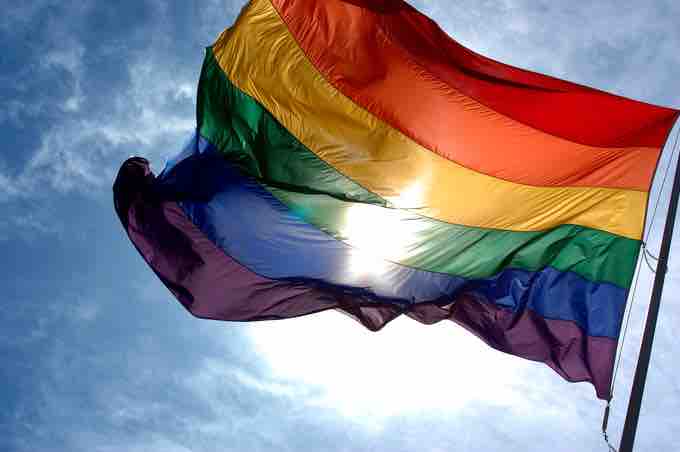Sexual Orientation
On a Continuum from Hetrosexual to Homosexual
When taking into account the sexual orientation of your audience it is useful to consider it on a continuum. Your audience could be made up of members anywhere along the continuum. There are three main classifications of sexual orientation: heterosexual, bisexual, and homosexual.
Hetrosexuality
Heterosexuality is romantic or sexual attraction or behavior between persons of the opposite sex. As a sexual orientation, heterosexuality refers to "an enduring pattern of or disposition to experience sexual, affectionate, physical, or romantic attractions to persons of the opposite sex. " It also refers to "an individual's sense of personal and social identity based on those attractions, behaviors expressing them, and membership in a community of others who share them. " The term is usually applied to humans, but is also observed in all mammals.
Gay, Lesbian, and Bisexual
The term "gay" in the West is not recognized by all men who have sex with men (MSM) as known in the rest of the world. "Gay" is generally used to describe a sexual orientation, while "MSM" describes a behavior. Also, men in Africa and Latin America engage in sexual relationships with other men while still referring to themselves as heterosexual, which is known as being "on the down-low. " The same applies to men who engage in homosexual activities in the military, gender segregated schools and universities, or prison, as most of them do not consider themselves as gay but still engage sexually with members of their own sex in order to fulfill their sexual desires.
Correspondingly, "lesbian" as a concept, used to differentiate women with a shared sexual orientation, is a 20th-century construct. Throughout history, women have not had the freedom or independence to pursue homosexual relationships as men have, but neither have they met the harsh punishment in some societies as homosexual men. Instead, lesbian relationships have often been regarded as harmless and incomparable to heterosexual ones unless the participants attempt to assert privileges traditionally enjoyed by men. Women who have sex with women (WSW) is a term used to identify women who engage in sexual activities with other women, whether or not they identify themselves as lesbian or bisexual. The term is often used in medical literature to describe such women as a group for clinical study, without needing to consider the issues of sexual self-identity.
A third orientation is bisexuality. Bisexuality is a romantic or sexual attraction or behavior toward both males and females. The term is especially used in the context of human sexual attraction to denote romantic or sexual feelings toward men and women. People who have a distinct but not exclusive sexual preference for one sex over the other may identify themselves as bisexual. Bisexuality has been observed in various human societies and elsewhere in the animal kingdom throughout recorded history. The term bisexuality, like the terms hetero- and homosexuality, was coined in the 19th century.
Most sexual orientation specialists follow the general conclusion of Alfred Kinsey regarding the sexual continuum, according to which a minority of humans are exclusively heterosexual or homosexual, and that the majority are bisexual. The consensus of psychologists is that sexual orientation, in most individuals, is shaped at an early age and is not voluntarily changeable.
The rainbow colors and the rainbow flag , once only used by the LGBT community in major cities of the West, is now appearing around the world to show solidarity with or acceptance of the LGBT community.

The Rainbow Flag
Rainbow Flag flying above New York. Photo by Ludovic Bertron
Become Aware of Bias--Hetreonomativity and Heterosexism
Speakers should be aware of the bias in the audience and in Western society in general toward hetreonomativity and heterosexism. One common mistake that speakers make is assuming that the audience is just like them with regards to this aspect of identity.
Heteronormativity is the body of lifestyle norms that holds that people fall into distinct and complementary genders (man and woman) with natural roles in life. It also holds that heterosexuality is the normal sexual orientation, and that sexual and marital relations are most (or only) fitting between a man and a woman. A "heteronormative" view is one that involves alignment of biological sex, sexuality, gender identity, and gender roles.
Heterosexism is a system of attitudes, bias, and discrimination in favor of opposite-sex sexuality and relationships. It can include the presumption that everyone is heterosexual or that opposite-sex attractions and relationships are the only norm and therefore superior. Nonetheless, heterosexism as discrimination ranks gay men, lesbians, bisexuals, and other sexual minorities as second-class citizens with regard to various legal and civil rights, economic opportunities, and social equality in the majority of the world's jurisdictions and societies.
Tips for the Speaker
Consider how to combat hetrosexism in your audience analysis and speech making. For example, rather than referring to or asking in an interview if one has a boyfriend or girlfriend, you can ask if the person is seeing someone or has a significant relationship. One can also use the term "partners" rather than the more hetreonormative "husband" or "wife. " And remember that families come in all different kinds of formations, not just biological male and female birth parents with their child.
Finally, there may be many speech topics where the sexual orientation of the audience will not be an important consideration. However, there are some areas which are important to LGBT people, such as laws around the world that criminalize homosexual behavior, recognition of relationships, same-sex marriage, LGBT adoption, immigration issues, violence and hate crimes, and legal aspects of transsexualism.